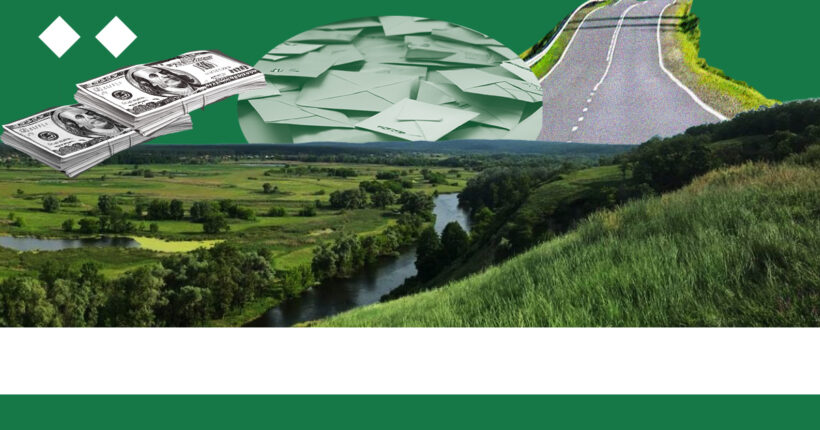
In the very center of the Kharkiv region, on the banks of the Siverskyi Donets River, there is a Homilsha Woods National Nature Park. It was created in 2004 to preserve, reproduce, and rationally use the typical and unique forest-steppe natural complexes of the Siverskyi Donets River valley, which have significant environmental, scientific, aesthetic, recreational, and health benefits.
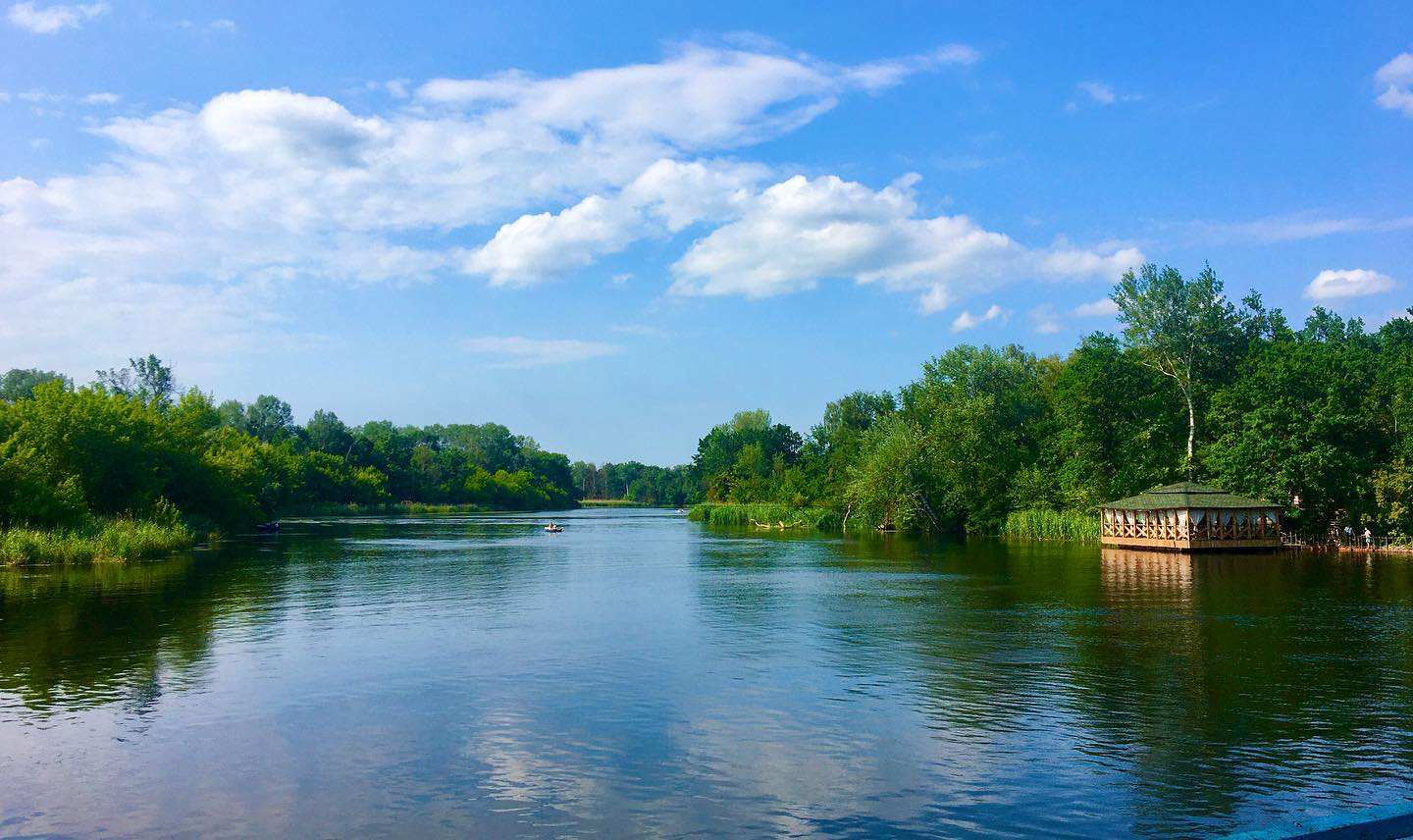
Homilsha Woods National Nature Park. Photo from the Facebook page of the park
Large forest areas and various natural conditions have created a kind of reserve in which many representatives of fauna and flora characteristic of the modern forest steppe have been preserved. There are many historical monuments on the park's territory: hillforts from Scythian times and the period of the Kyivan Rus, the remains of a Cossack monastery.
By the way, this park has one of the best reports under the Chronicle of Nature program, according to the scientific curator — the Institute of Zoology of the National Academy of Sciences of Ukraine and the Ukrainian Nature Conservation Group.
Practically from the very beginning of the establishment of the nature park, its research department was headed by Stanislav Viter, candidate of biological sciences and ornithologist, author of more than 50 scientific and popular science works. Thanks to the scientist's work, it was possible to create 40 objects of the Emerald Network, a network of Areas of Special Conservation Interest to conserve wild flora and fauna and their natural habitats of Europe, which was launched in 1989 by the Council of Europe, fulfilling the corresponding point of the European integration program of Ukraine, which contributed to Ukraine receiving the status of a candidate for EU membership. Now Viter is working on the world's first Ukrainian-language encyclopedia, "Life of Animals".
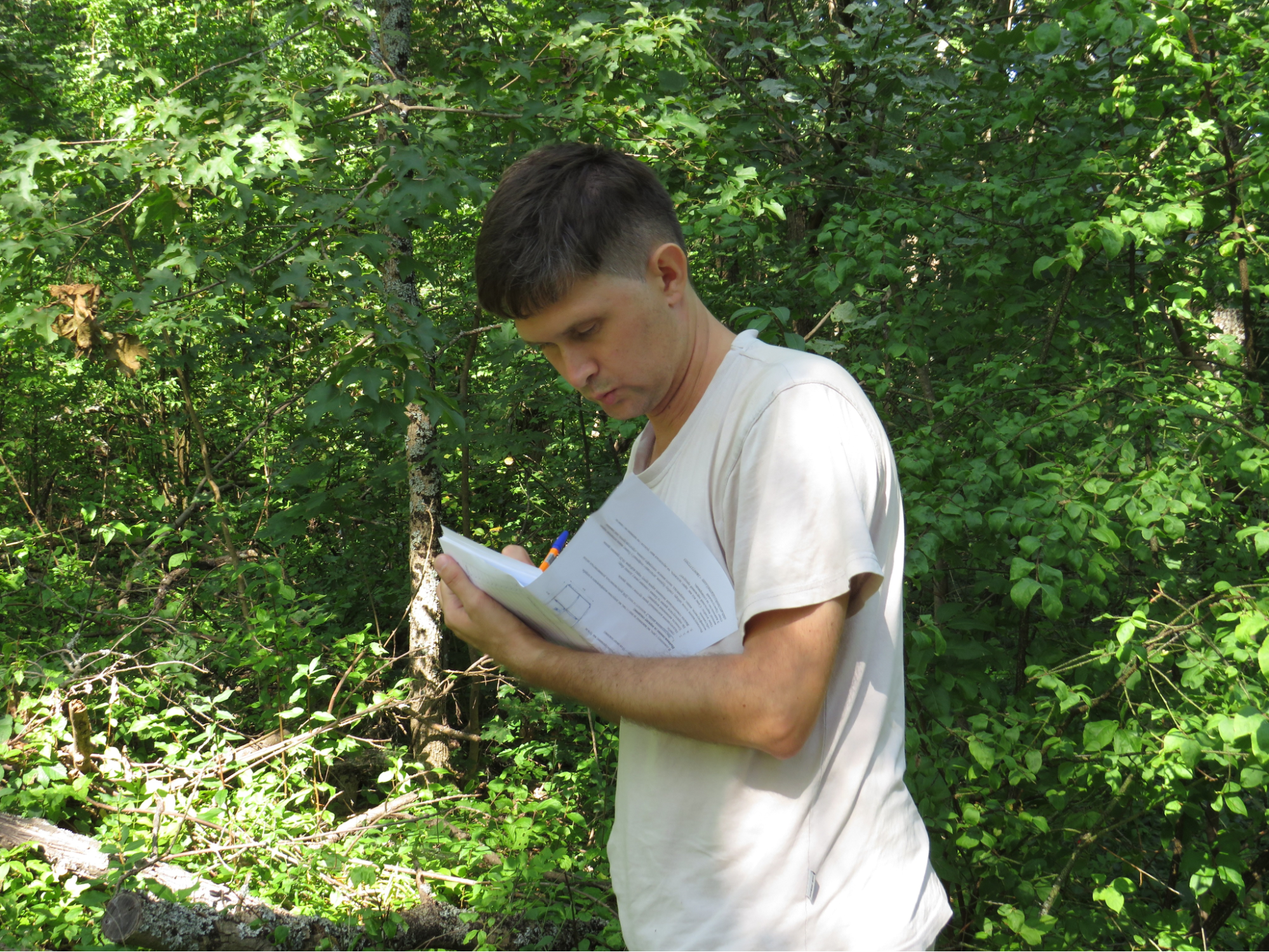
Scientist Stanislav Viter, who headed the research department of Homilsha Woods. Participated in creating 40 objects of the Emerald Network and protecting and restoring the National Park. Photo courtesy of Stanislav Viter
These are not all the achievements of the scientist and his colleagues — in fact, there are many more. For example, the creation of GBIF databases, a global biodiversity database, on the fauna and flora of the territory of the Kharkiv and partially Poltava regions, AR Crimea, Sumy, Kyiv, and Donetsk regions. Almost 15,000 registrations should come in handy when assessing the impact of the war on the environment and the calculation of damages from the aggression of the Russian Federation.
What is the problem?
Together with Viter, 35 scientists worked in Homilsha Woods. Together with his colleagues, the scientist worked out strategies to protect the park's natural ecosystems, literally taught residents to be careful with natural resources, and for many years defended the value of the reserve. For example, locals were fined for destroying red-listed plant species, and the explanatory talks were held with them.
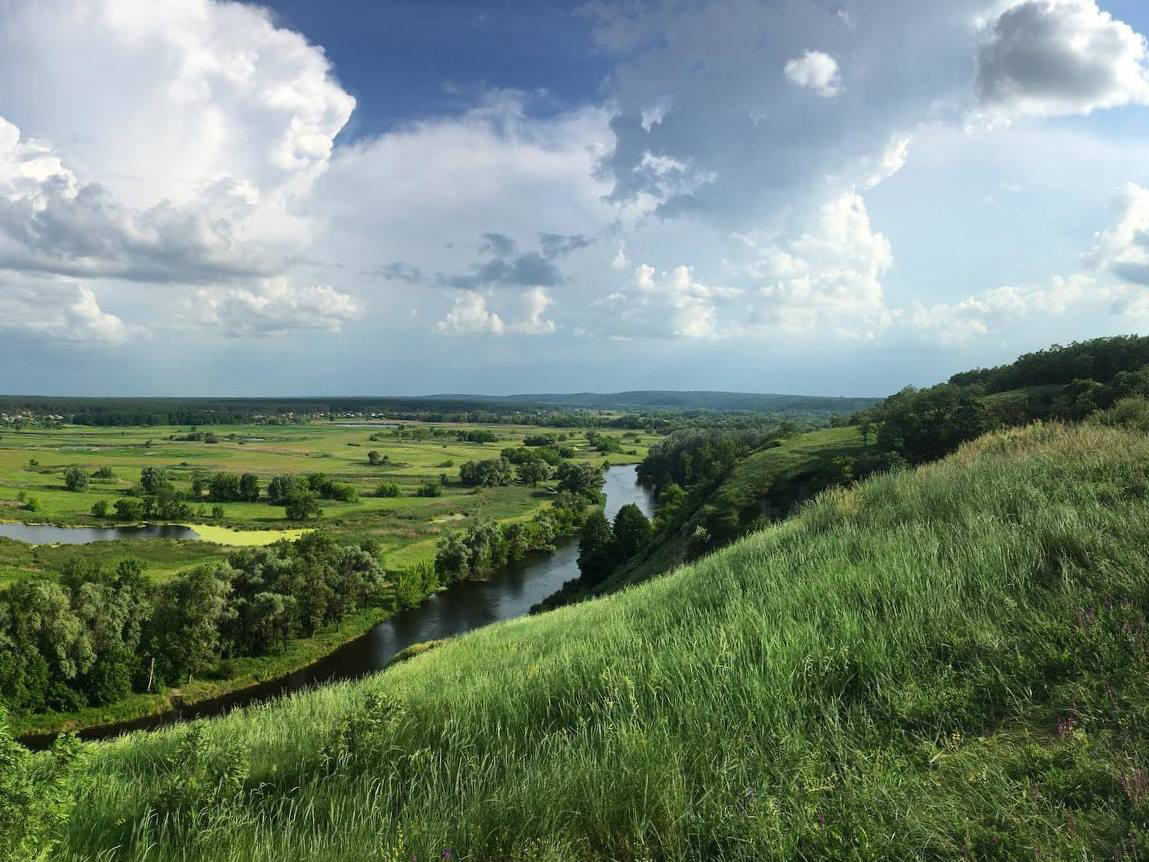
NNP Homilsha Woods. Photo from the Facebook page of the park
However, the national park is going through turbulent times — Viter justifies this by the improper management of the park by its director, Oleksandr Pomazan.
Gradually, relations were established with the locals, but now this director has destroyed the attitude of the locals towards the national park as a respectable institution. It will be challenging to restore local faith that the park is working and that the law cannot be violated in a nature conservation institution. "We will have to work with the new generation for another ten years," Viter told Rubryka.
In less than a year, 23 employees left the institution, and residents again received carte blanche to conquer nature centers. They plan to build an asphalted road through the Homilsha Woods, and it seems that they want to privatize part of the valuable territories to build a recreation center there. It all started in December 2022, when the Ministry of Environment appointed Oleksandr Pomazan as park director.
Asphalted road instead of crossing
The first conflict between colleagues arose over a dispute about roads.
At the beginning of a full-scale invasion, the military blew up a bridge on the park's territory before the threat of occupation — a common practice almost throughout Ukraine. The path was destroyed, and after Pomazan became the director, instead of building a pontoon crossing next to the bridge, he proposed to create a new asphalt path through the protected forest but next to the abandoned recreation centers.
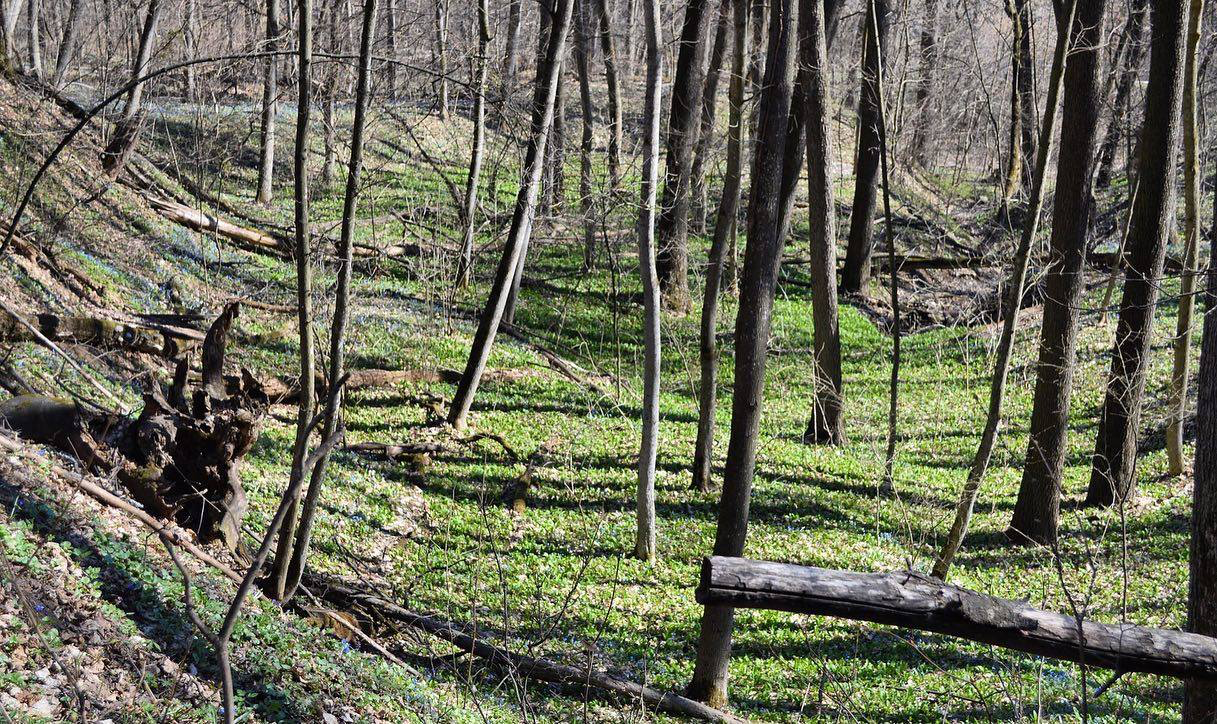
NNP Homilsha Woods. Photo from the park's Facebook page
It is possible that an asphalt road at the expense of the state could make the areas along which it passes very attractive to developers.
This proposed road should pass through places where recreation centers are now abandoned. According to the geo cadastre, they are not part of the national park, so after the construction of the road, this land, which they want to register as private property, will immediately increase in value. Instead, the pontoon crossing that Viter proposed would cause much less damage to ecosystems than building a new road.
Additional research or corruption?
The second conflict arose after Pomazan attempted to appoint "additional scientific research" on particularly valuable natural areas. Viter explains that it is usually easy to schedule the felling of the forest after additional territory studies and thus make extra money from wood.
"In my opinion and the opinion of my colleagues, this contains a corruption component and cannot be included in the new 'Project for the organization of the territory of the Homilsha Woods NNP.' You can make the necessary report and cut down," Viter comments.
Open conflict
Over time, the situation turned into an open conflict between Pomazan and Viter, and in April, the latter decided to resign from the institution, having worked in it for 15 years, during which as many as six directors changed.
Viter handed the first application personally to the director and sent the second one to the institution in an official letter the next day. Both applications were received at the institution, but in response, Viter received a strange letter from the park administration several months later —about his dismissal, as he wanted, but for numerous absences — from the date of his application until July.
Why are employees fired from the park?
"The institution currently has over 20 vacancies out of the available 35. The institution cannot work at full strength under such conditions. It is a non-working institution," says Viter.
After the appointment of Pomazan as director, 23 people submitted their resignations, and many of them gave the same justification as Viter — bullying by the manager. Rubryka spoke with one of the employees of the park, who resigned. This person asked not to be named but noted that he has known the current director of the park for a long time and referred to him as "rude, incompetent, defiant". The former employee realized that working with Pomazan was more harmful to their health and immediately wrote an application to go on vacation, first for two weeks, then for 90 days, and when that period ended, immediately gave a notice.
According to our source, the current director lacks communication ethics and is not competent in management issues. Instead, the park employees mainly worked there "because it is interesting to them, and not at all because of the money." Our interlocutor also added that the salaries of park employees are "ridiculous."
We decided to check these theses and asked Pomazan himself why people "run" from the park and what was done during his tenure. He refused to comment by phone (indicated on the institution's website), and he has not yet responded to an official request that we sent to the Homilsha Woods NNP on September 8. However, we await an official response and will update the piece if we receive it.
UPD: In response to the question about why most employees left the Homilsha NNP, in the official reply letter we received on October 10, Pomazan stated that the former employees created obstacles for the audit. He called his colleagues' claims about incompetence gossip, and he called the plans mentioned by Pomazan's former colleagues regarding the construction of an asphalt road as having never existed.
What is the solution?
Viter and other environmentalists, including Oleksiy Vasylyuk, head of the Ukrainian Nature Conservation Group, became alert. Viter wrote a statement to the Labor Protection Service, where they confirmed that Viter was right and that his dismissal was illegal. Viter also prepared a lawsuit due to a violation of labor legislation.
In addition, the conservationist told about the shocking incident to fellow scientists from India, Canada, the USA, Chile, Great Britain, and the countries of the European Union.
Concerned persons sent several letters to the Ministry of Environment requesting to resolve the conflict. One — from Viter, the other — with a detailed description of the situation — was collectively compiled by local farmers, officials, and former park employees. None of them have received any official answers to these letters.
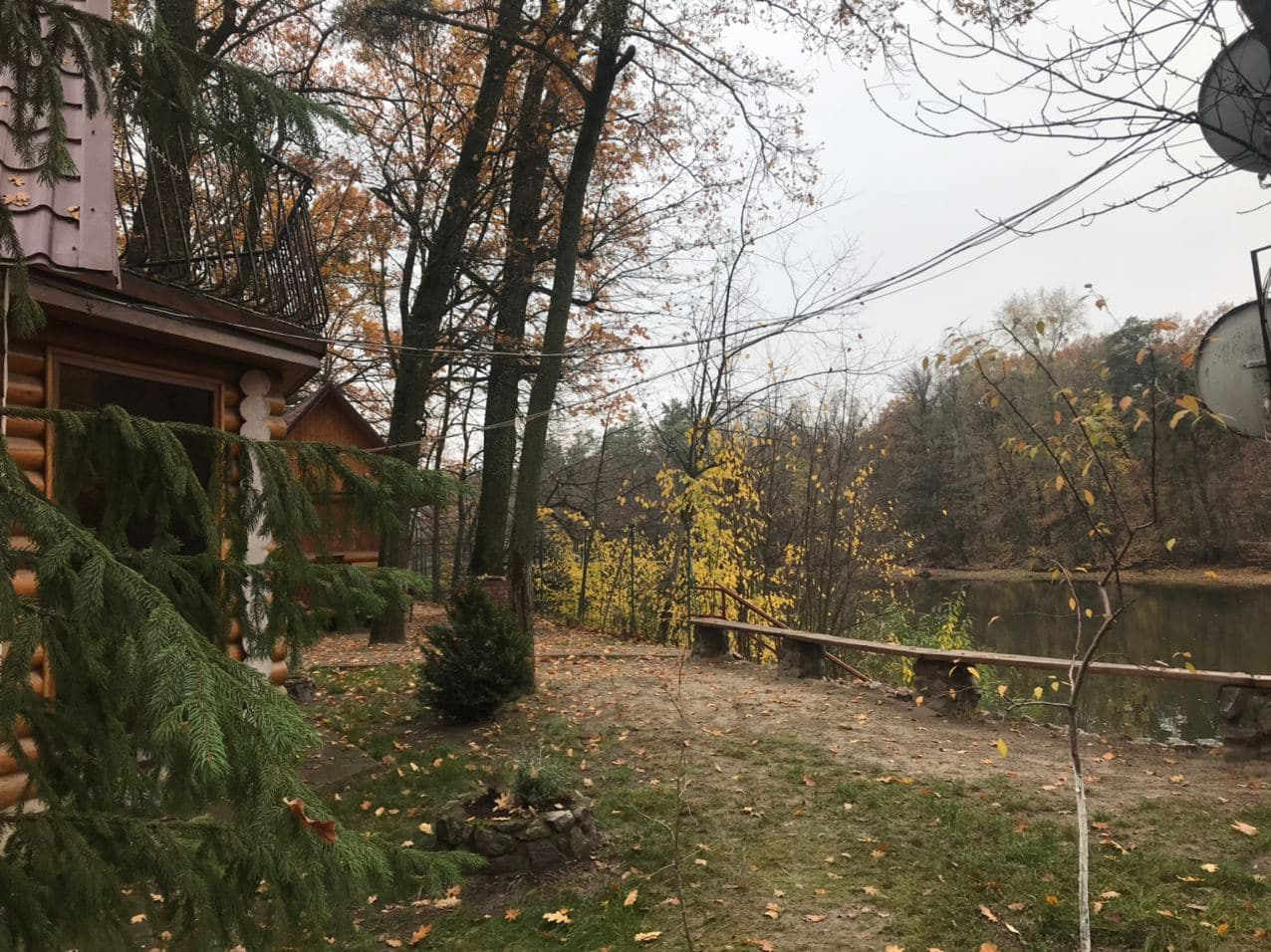
NNP Homilsha Woods. Photo from the park's Facebook page
Those institutions that have a good work atmosphere work well
Environmental protection institutions in Ukraine are financed at the expense of the state. According to the employees, salaries are meager there, so almost all ideological conservationists are true fans of their work. However, it is possible to be effective only if there is harmony in the team:
"National parks in Ukraine with good work atmosphere can be counted on the fingers," says Yehor Hrynnyk, a conservationist and Ukrainian Nature Conservation Group expert. "But they exist, and they really work. A good example is the Tuzly Lagoons National Nature Park or the Desna-Starohutskyi National Nature Park, although now there is no one left there."

NNP Homilsha Woods. Photo from the park's Facebook page
The last institution is located on the border with the Russian Federation, and recently a tragedy happened there. Foresters were shot by the sabotage-reconnaissance group, so, according to Hrynnyk, the workers dispersed because performing duties under such conditions is dangerous for life.
However, both parks can boast of good results. In the Tuzly Lagoons, for example, in a few years, it was possible to win back untouched lands on the institution's territory from farmers. There are no more illegal plowings. The park regularly reports on the number of poachers caught and plans to expand the boundaries.
As for the Desna-Starohutskyi National Nature Park, this is a unique case because this year, the team of employees of the institution received the most prestigious award for national parks — "Best Ranger" of the International Award of the IUCN WCPA World Commission on Protected Areas, which is one of the six commissions of the International Union for Conservation of Nature.
No matter how banal the solution may actually be, it is better to check the candidates and listen to the team. The Ministry of Environment of Ukraine must, first of all, implement this solution, as it is the only good one.

Instead of blueberries, a stinking swamp: what is the problem with jeeps in the Carpathians and what to do about it

The de-occupied Kamianska Sich National Park fights against the drying up of the Kakhovka Reservoir

Environmental disaster of a global scale: how the Nyzhnyodniprovskyi National Nature Park lives after the explosion at the Kakhovka Reservoir
Newsletter
Digest of the most interesting news: just about the main thing





